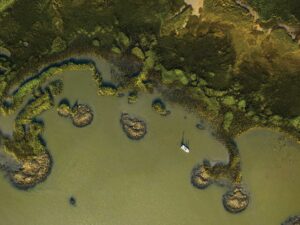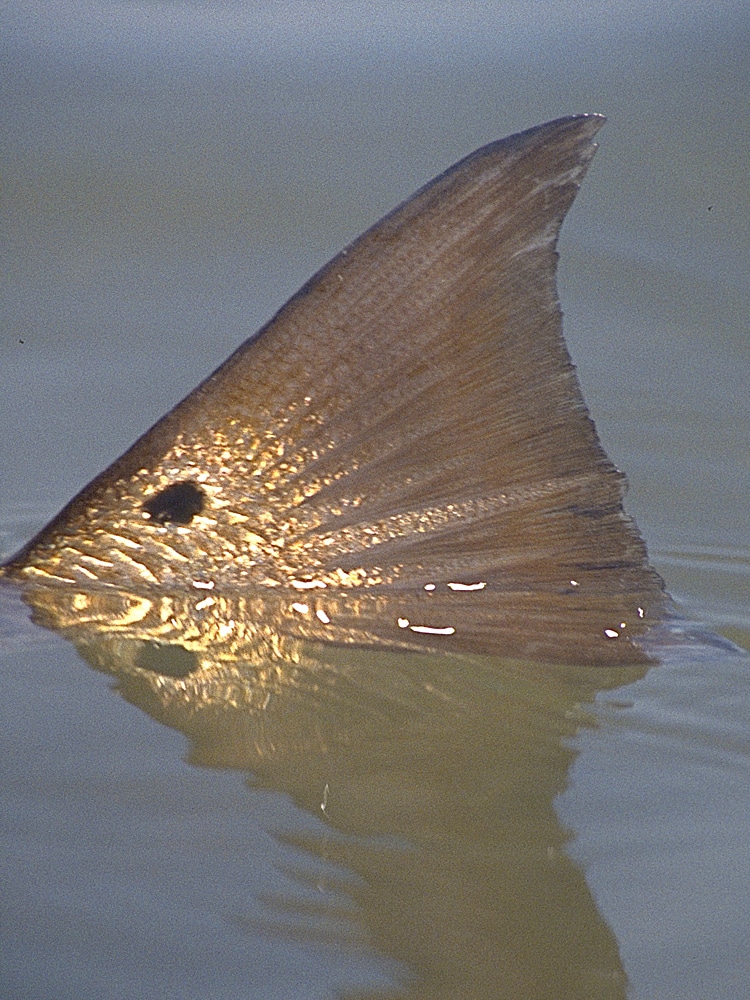
Whether you call them redfish, red drum or channel bass, reds are a popular inshore species that display a dogged fighting style which includes powerful, streaky runs, unexpected turns, and last minute dives under the boat. Mostly available throughout the Gulf of Mexico and South Atlantic coast, redfish are known to favor certain areas, and here we list 12 of the finest places for catching redfish. Just missing the list is the Chesapeake Bay, an area that’s producing monster bull redfish with regularity.
Redfishing in Venice, Louisiana
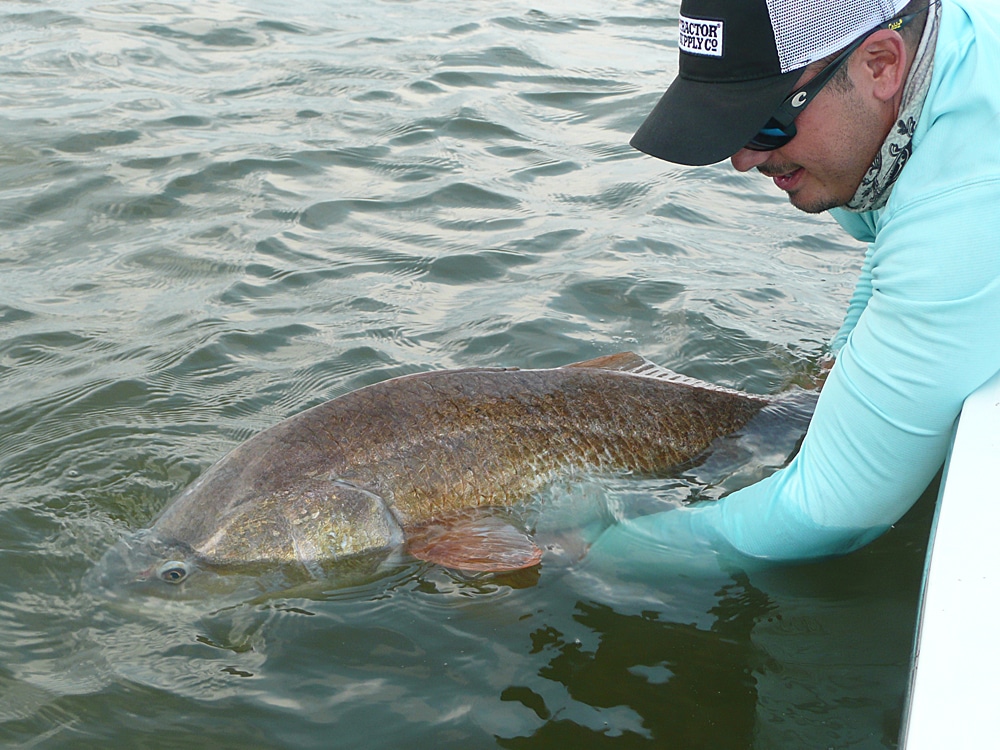
Perhaps the fishiest town along the entire Gulf of Mexico, Venice is renowned for its several world-class fisheries, and redfish definitely is one of them. Southwest Pass and its jetties have long been the battlegrounds for many fights with powerful bull reds, but the marshes of East, West, Barataria, California and Black bays are also loaded with hungry redfish of varying sizes. The Wagon Wheel, directly adjacent to Venice Marina, Bay Coquette and Yellow Cotton Bay are other nearby hot spots. While the water in the marshes is often clear, the larger, more heavily transited waterways in the area usually aren’t, which is why many local guides resort to popping corks to call redfish to their lures, normally hanging 18 to 36 inches below.
Redfish Fishing in Hopedale, Louisiana
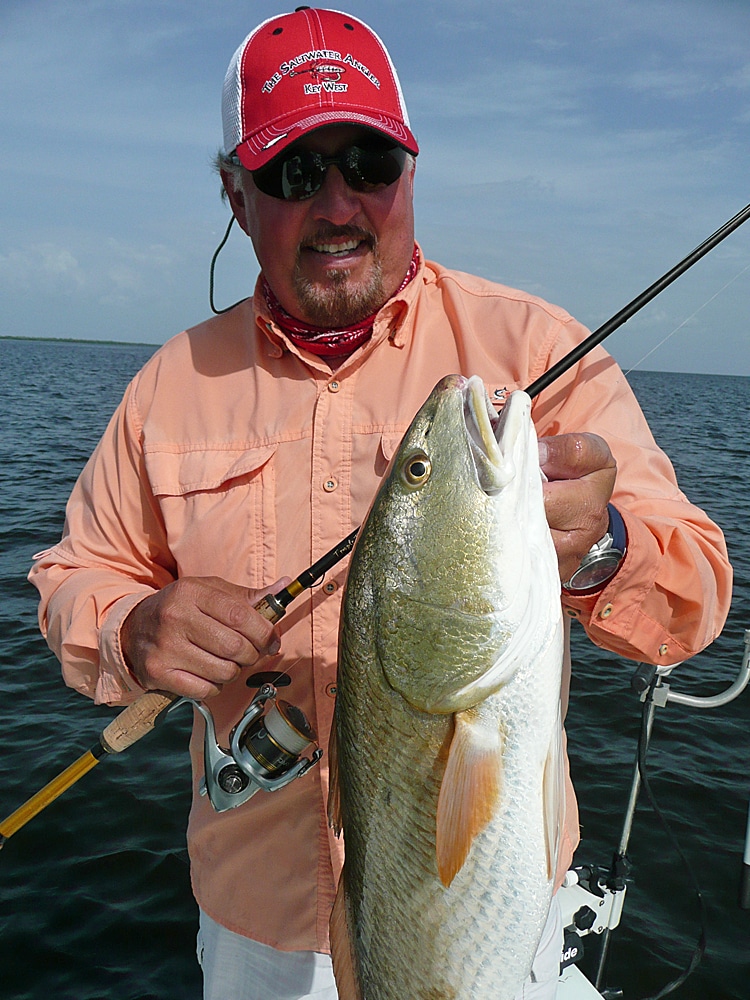
The intricate system of bays, ponds and bayous that is Biloxi Marsh has long been considered a redfish wonderland, and thousands of anglers make regular pilgrimages to Hopedale or nearby Delacroix to quench their thirst for light-tackle bliss. Not only are redfish incredibly abundant in this coastal expanse of Southeast Louisiana, they’re also aggressive — gladly attacking a wide range of lures — and many are quite large. Specimens exceeding 20 pounds are common here, and 30-pounders don’t raise any eyebrows. Aside from the potential to hook real bruisers, what makes the area so special for many anglers is the propensity for small, shallow ponds and the narrow bayous that connect them to yield great numbers of fish, including many trophies.
Mosquito Lagoon, Florida Redfish Fishing
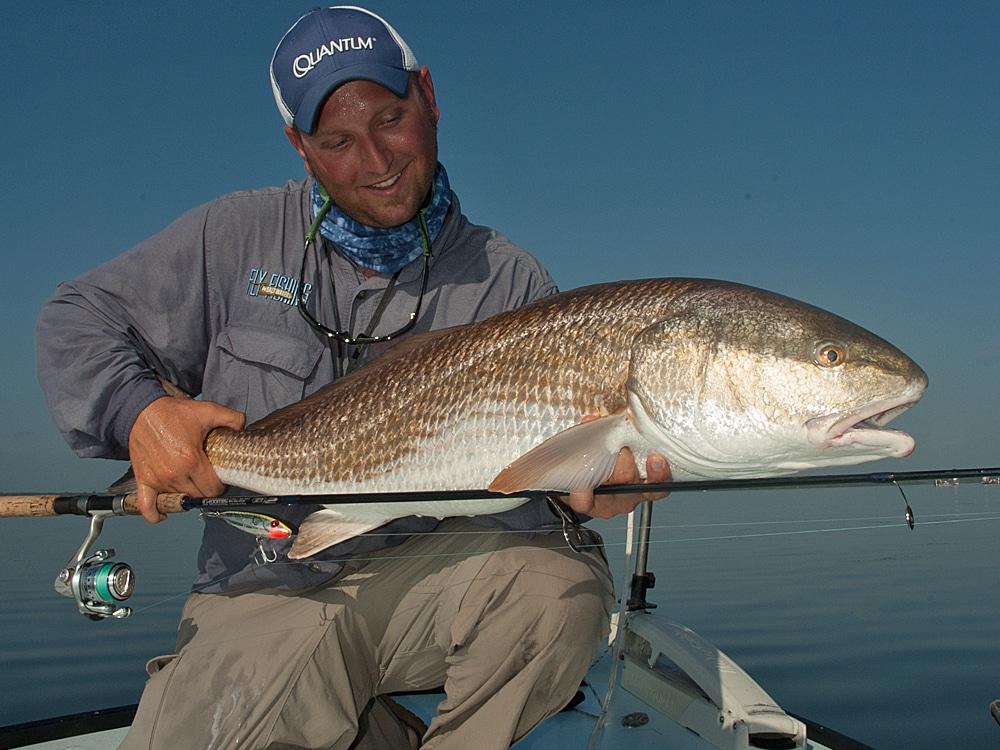
Home to a resident population of 30-pound-plus pounders, Mosquito Lagoon is also popular for the hordes of slot-size reds that prowl its grass flats, coves, troughs and oyster bars. This shallow body of water in east central Florida primarily attracts fly and light-tackle anglers aboard technical poling skiffs and slightly larger flats boats, but the outer flats edges, some of which are 3- to 4-foot deep, and the considerably deeper ICW and Haulover Canal, enable much bigger craft to also get in the game. Soft-plastics and weedless spoons are most effective, but when winds have been light and there isn’t a lot of floating grass on the surface, topwaters are productive early and late in the day. Reds are often skittish and quite selective at the more popular spots of the lagoon, like Tiger Shoals and the Whale Tail, but ladyfish chunks or large, live shrimp usually do the trick.
In the last decade, Mosquito Lagoon has seen catastrophic loss of its seagrass beds and flats, mostly do major quality issues because of runoff and pollution. Here’s to hoping the state of Florida, and local cities surrounding Mosquito Lagoon and the Indian River Lagoon, will do what it takes to bring this legendary fishery back from the brink. Recovery will be slow, as it likely involves major cash dollars to fund the recovery efforts.
Fishing for Redfish in Port O’Connor, Texas
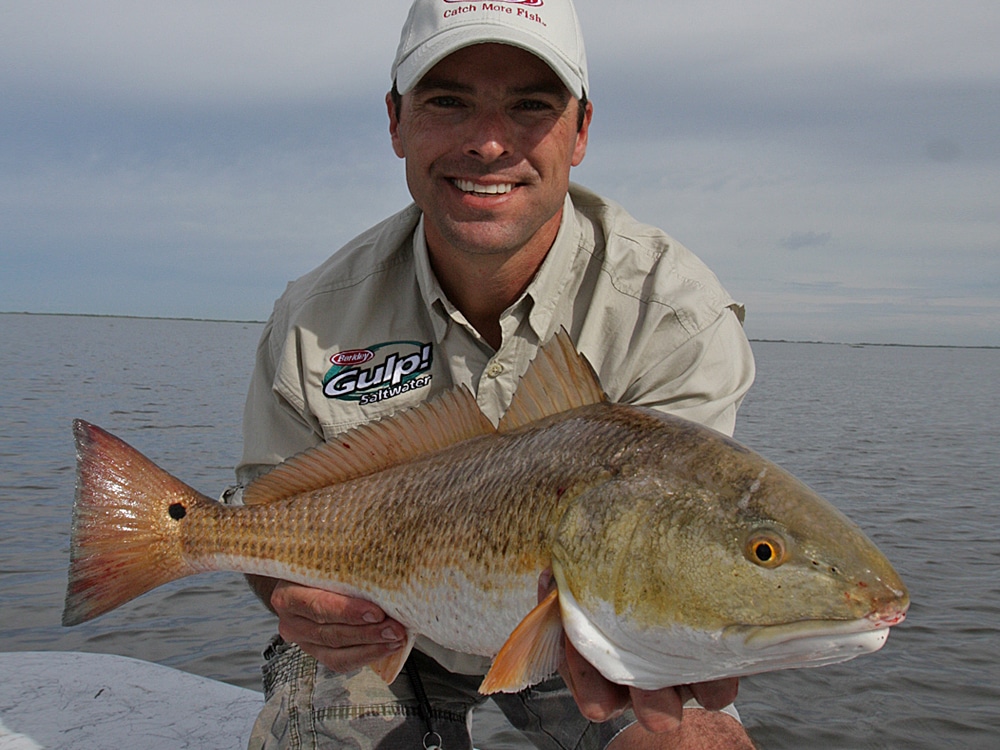
Strategically located right between Matagorda and Espiritu Santo bays, and a short run from San Antonio, Aransas and Copano bays, Port O’Connor promises anglers immediate access to miles and miles of prime redfish water, where oyster reefs, grass beds and mud flats, all flush with baitfish and crustaceans, hold both year-round resident reds and the seasonal influx of redfish moving to and from the Gulf of Mexico. Some marshy areas and flats enable sight fishing, but more redfish are caught here by drifting baits or lures over shell bottom, and blind casting around rocks, pilings, oysters and other structure. Port O’Connor is just one spot that makes fishing for redfish in Texas so great.
Charleston, South Carolina Redfishing
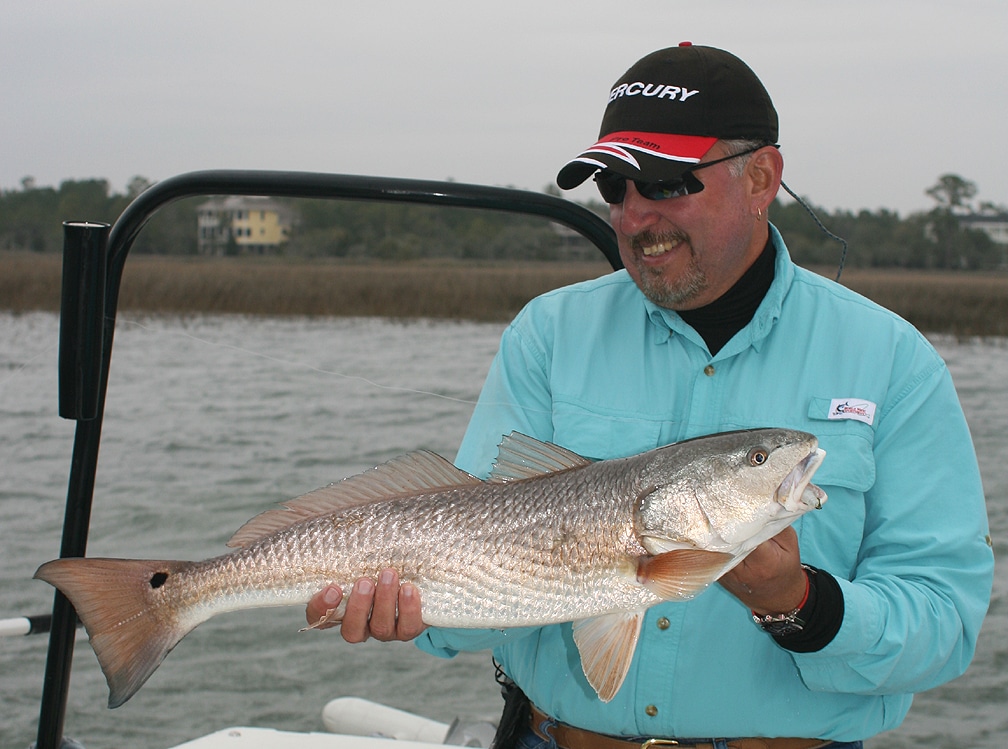
With countless redfish hangouts peppered from the Harbor River northward through the Santee Coastal Reserve, Charleston has become a favorite gateway to superb low-country redfish action. Whether chasing schooling fish along the ICW and at various creek mouths and coves, or stalking tailers over flooded grass marshes during spring high tides, redfish seekers who approach the fish and their likely ambush points stealthily score early and often. Anglers using artificials should carry weedless spoons and soft plastics they can rig Texas style to work the lures through vegetation more efficiently.
Redfish Fishing in Pine Island Sound, Florida
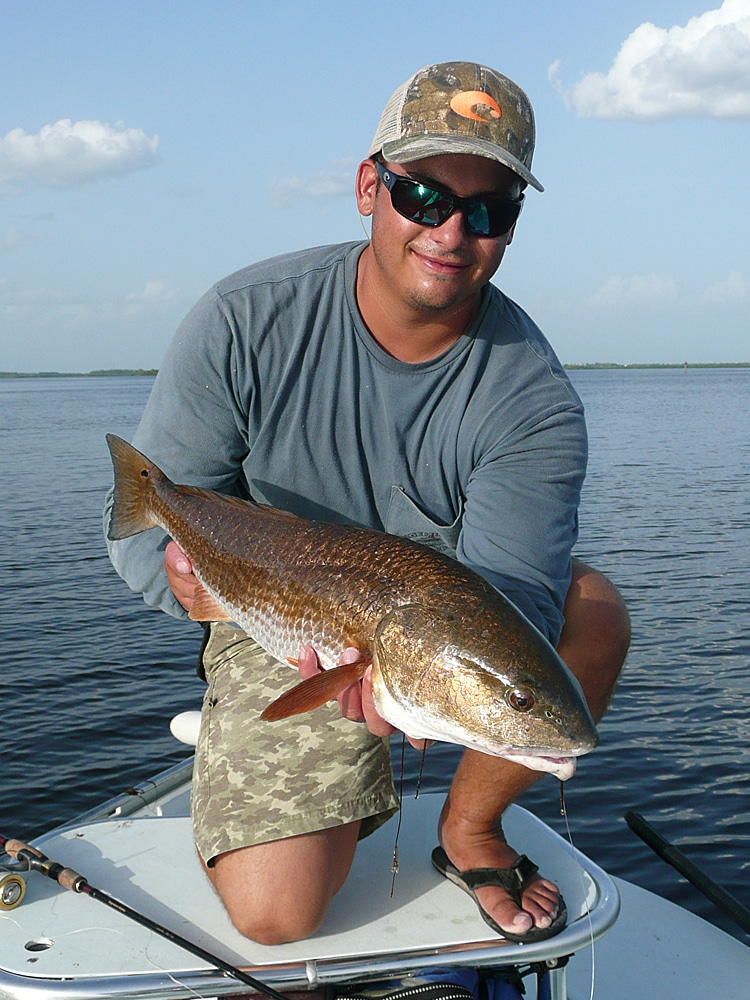
Extensive, lush grass flats, countless mangrove shorelines, island troughs and oyster bars, and numerous docks along various stretches of the ICW afford anglers seemingly endless locations from which to pry redfish. Crystal-clear water in most sections of the Sound is ideal for sight fishing, and the abundance of favorable habitat and forage options make redfishing good to excellent no matter the season. However, August through October is when the large, spawning-size fish congregate in schools and roam deeper flats and the ICW. While stalking fish in skinny water aboard shallow-draft boats accounts for a large percentage of the reds caught in the region, live-baiting and chumming with live baitfish is quite popular here. And when the fish turn skittish, local anglers often bottomfish with ladyfish chunks or scented lures in flats channels and island troughs.
Cocodrie, Louisiana Redfish Fishing
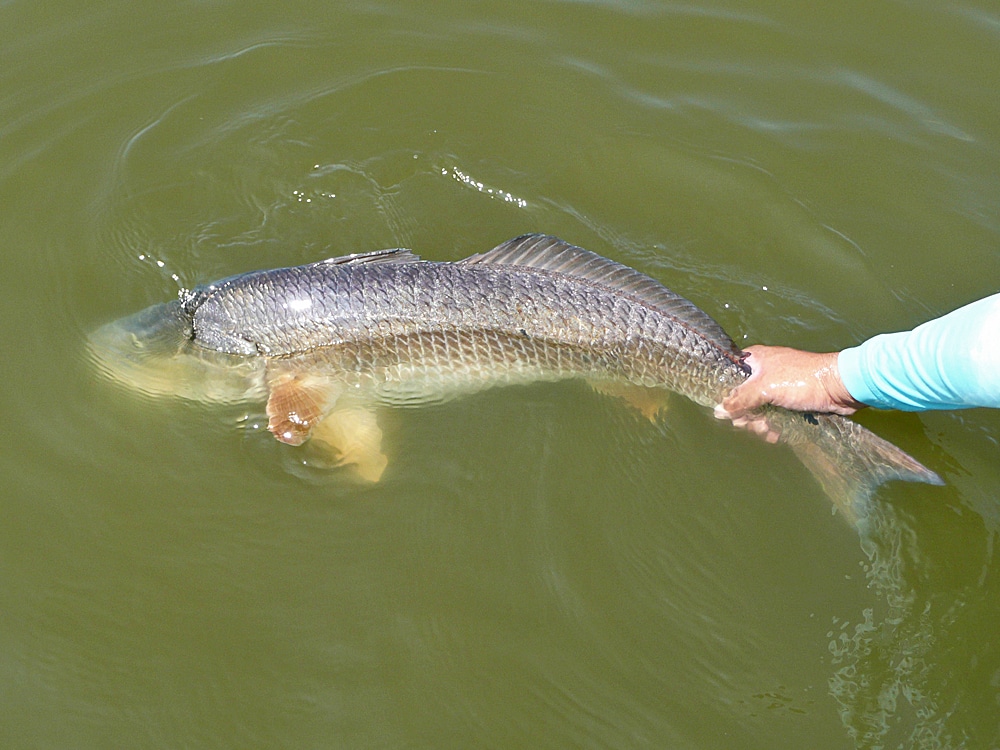
While Venice and Hopedale are more famous and host more visiting anglers, the labyrinth of brackish ponds, small bays — known locally as lakes, bayous and channels (many dug by the oil and gas industry) that surround Cocodrie also harbor a large portion of Louisiana’s prolific redfish population, and the fishing is nothing short of terrific. Those reluctant to navigate the twists and turns of the marshes, find plenty of action along the outer shorelines of Terrebonne and Caillou bays, and the barrier islands of Dernieres, Raccoon, Whiskey and Timbalier, where some truly large reds are often on patrol.
Fishing for Galveston, Texas Redfish
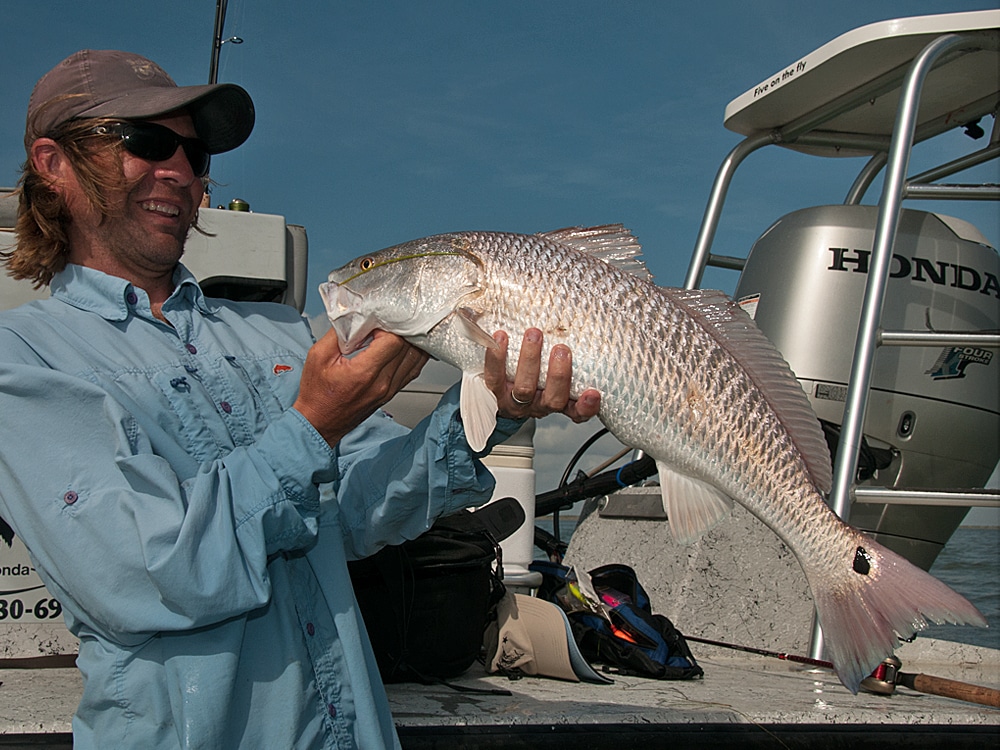
Galveston Bay, and adjacent East, West and Trinity bays are laden with oyster reefs, complemented by dozens of oil platforms and numerous dock pilings that line stretches of the surrounding shores, thus providing redfish with the cover that affords them protection and attracts prey. Though some anglers chase reds along grassy shorelines and narrow marshes throughout the ICW, most of redfish action in this area takes place in 6 to 12 feet of water, as anglers drift or slowly cruise with their trolling motor under feeding birds, over oysters, and around schooling baitfish or submerged structure. Jigs tipped with strip baits, live shrimp or scented soft plastics are favorite offerings among local anglers and guides.
Beaufort, North Carolina Redfish Fishing
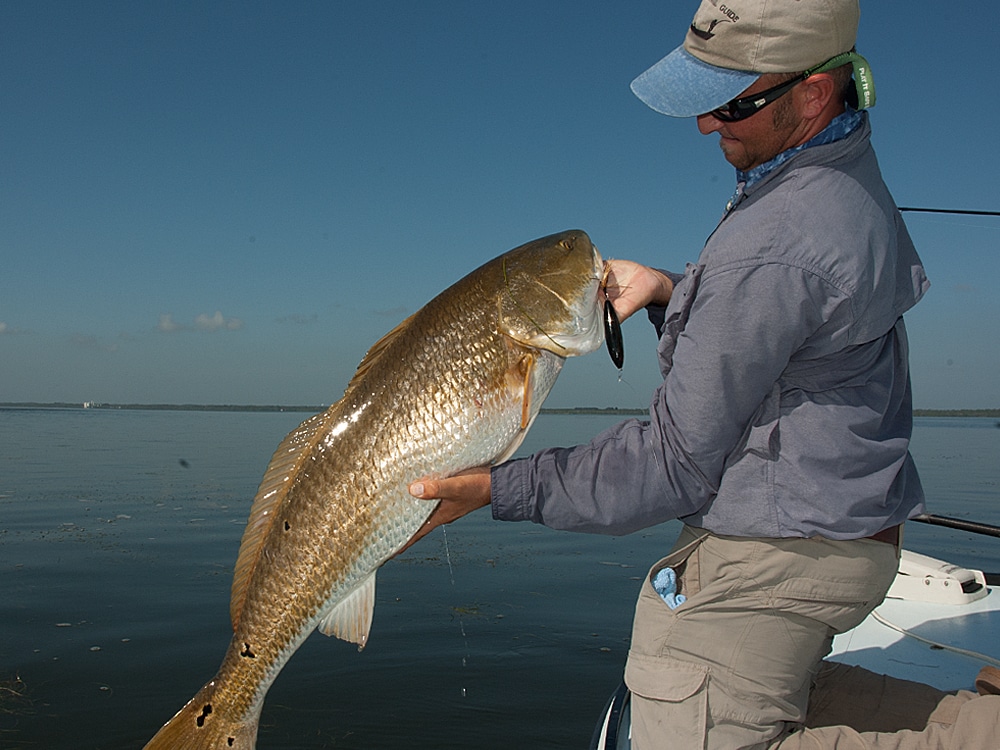
The fishy waters of Bogue, Core and Pamlico sounds, Harlowe Creek, the North and Neuse River, Beaufort, Ophelia and Ocracoke inlets, and numerous tidal creeks and coves offer the perfect habitat and ample supplies of baitfish and crustaceans for redfish to thrive. From little rat reds — known locally as puppy drum — to 60-pound-plus bulls, this part of North Carolina’s coast offers excellent opportunities for lure tossers, fly flingers and bait soakers alike. And depending on the time of year and the conditions, anglers have little trouble connecting with reds in protected backcountry waters, the surf, and numerous stops in between.
Fishing for Port Mansfield, Texas Redfish
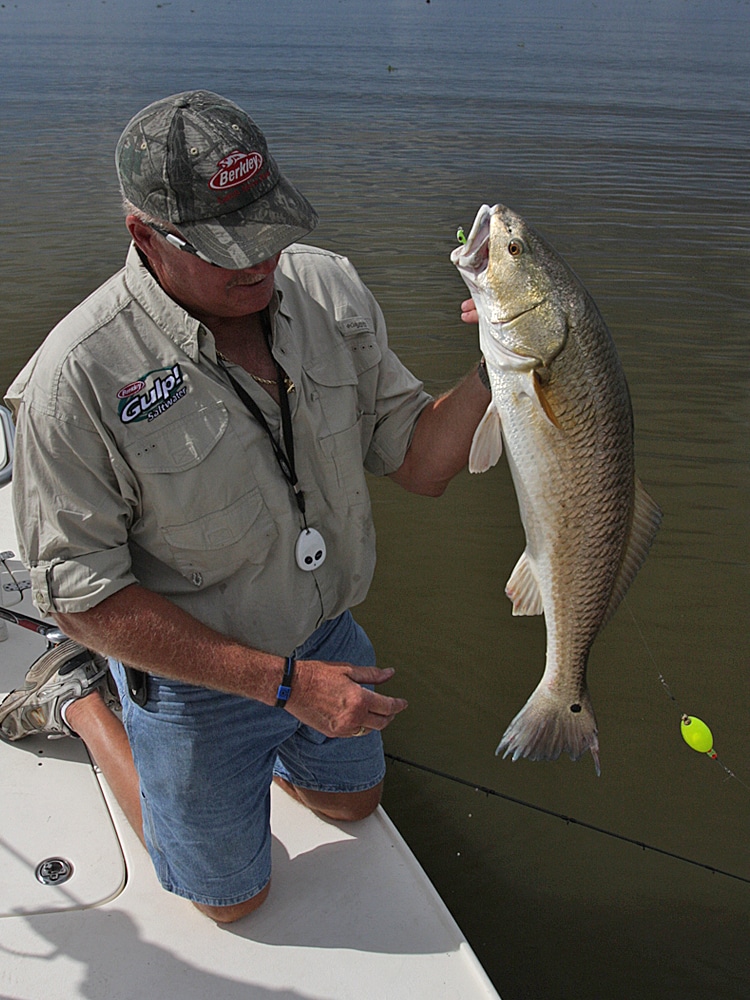
Direct access to Laguna Madre makes South Padre Island a premier redfish destination. A slow cruise along the ICW is often enough to spot fish feeding along the edge of the grass or the adjacent drop-off. And miles and miles of fertile grass flats afford anglers great chances to tangle with reds of all sizes. Skinny-water fans find plenty of fish tailing and waking, or waiting in ambush at many of the sand holes sprinkled throughout the lagoon. When a stiff wind muddies the water, making sight fishing difficult, drifting a jig-and-soft-plastic combination under a popping cork often does the trick. Shorebound anglers hook their share of reds, many over 20 pounds, fishing both natural baits and lures from the rock jetty.
How to Catch Brunswick, Georgia Redfish
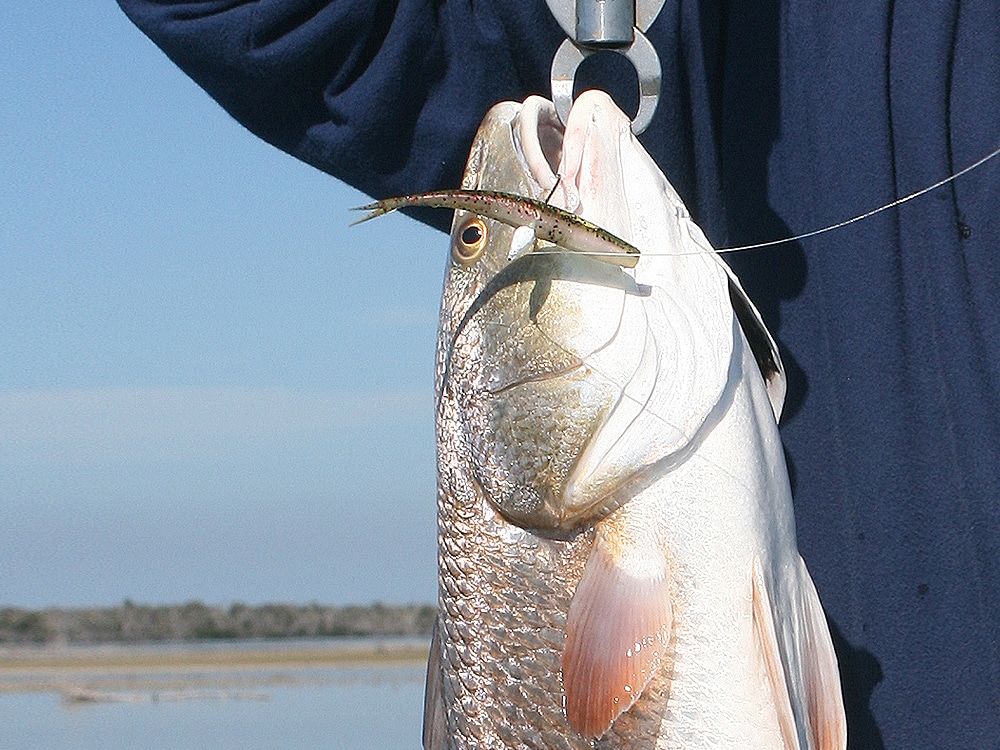
Smackdab in the middle of Georgia’s Golden Isles region, Brunswick is a great place to access the myriad tidal creeks, and countless grass marshes and oyster-laden mud flats stretching from the Florida border north to Blackbeard Creek, where a healthy population of redfish, ranging from a couple of pounds to more than 40, roam and forage all year long. The coastal creeks and marshes west of Cumberland, Jekyll and St. Simons islands are popular among sight-fishing fans, but the ICW and many deep creeks and channels are also reliable redfish producers, especially for anglers bottom fishing with live or dead bait.
Mayport, Florida Bull Redfish Fishing
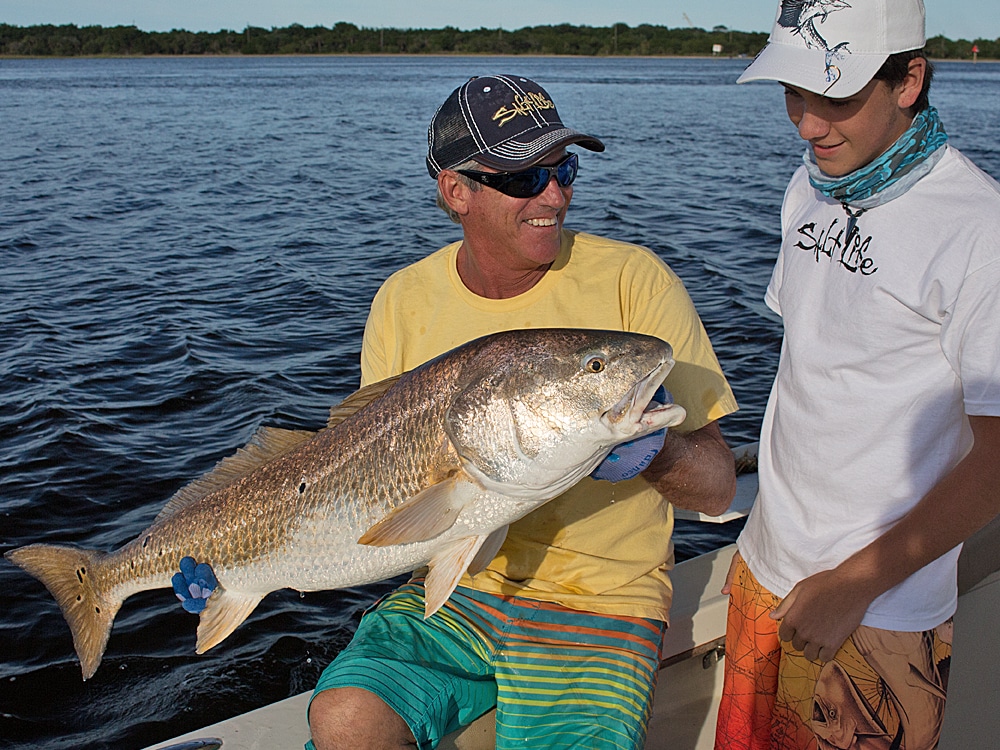
Several meandering creeks that empty into the St. Johns River and their grassy marshes and mud coves hold plenty of small to medium redfish, but the inlet and its jetty often yield much larger specimens. In addition, the 60-foot-deep ship channel is a magnet for the giant spawners, which from late July through October congregate in great schools, usually behind bridge abutments, boulders, pipes, and other bottom structure that shields them from the fast current. While the popular lures and flies take fish in the shallows, bottomfishing with chunks of blue crab is the way to go for bulls in deeper water, and a spread of four to six baits often sparks the bite and yields multiple catches in succession.




